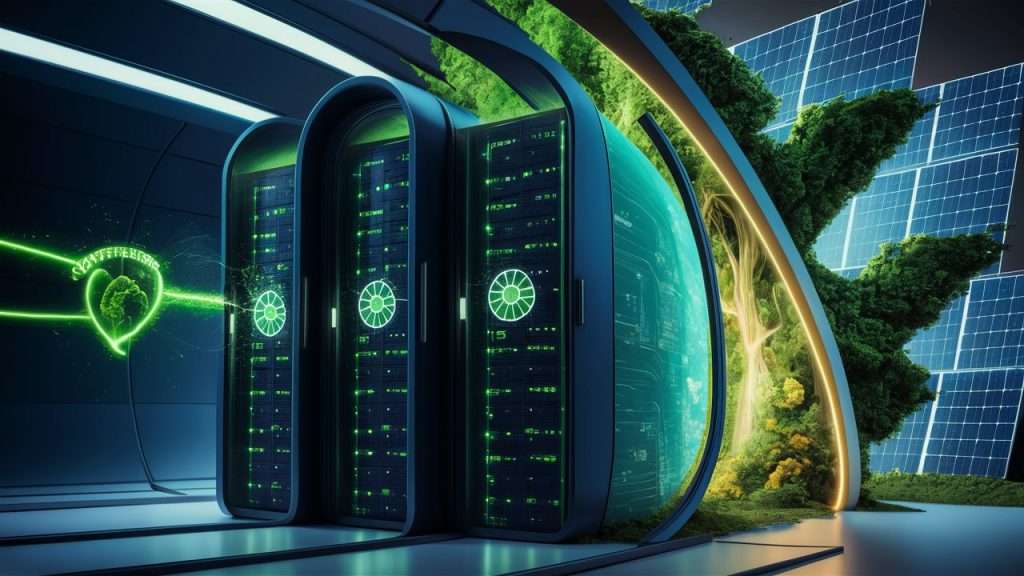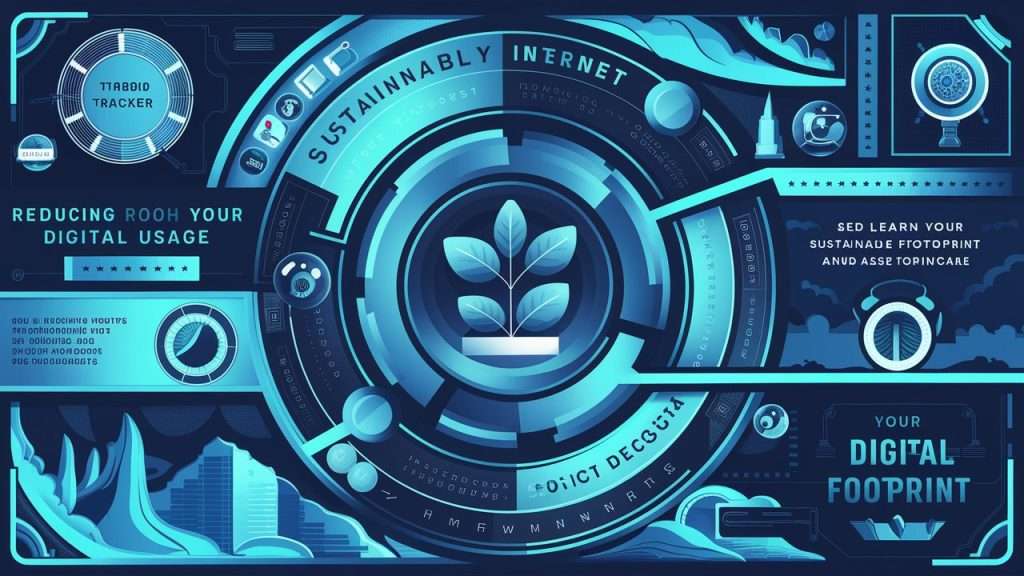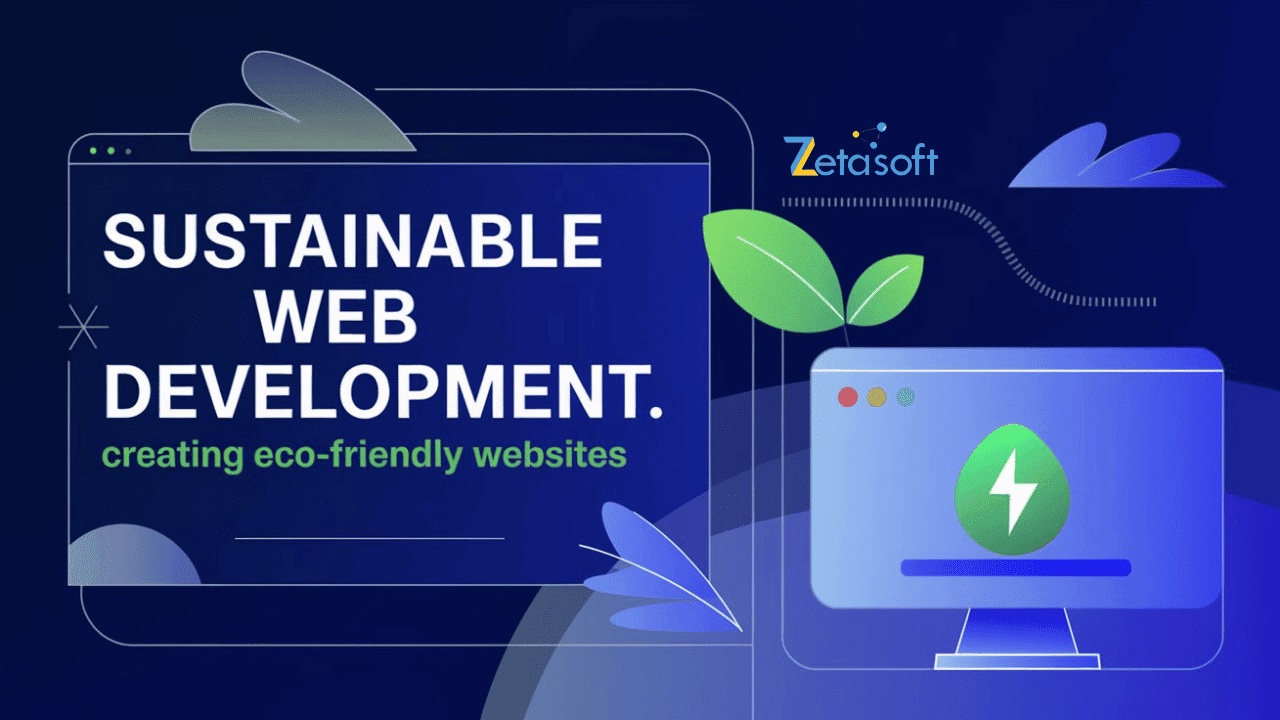It is the same, the issue on sustainable practices is becoming more demanded in all the industries including web development. For every new website that is created, or require servers to host, the energy consumption rises with the growing use of the internet, thus a bigger carbon footprint. In an effort to minimize this negative footprint, web development for sustainable environments seeks to fashion environmentally friendly websites. This articles aim to establish the fundamental requirements for managing Sustainable Web Development and reduces the net negative effects that a Web site has on the environment without at the same time, compromising the quality of the experience a user gains from interaction with the site.
Optimizing Website Performance to Reduce Energy Consumption

First of All In the Sustainable Web Development, Performance is also an area that can be considered as probably one of the most efficient in making website more environmentally friendly. Faster and effective websites not only create a good impression on the minds of the consumers but they are also eco-friendly as these do not involve a lot of hardware and software to run, and to be loaded.
Minimizing Page Load Times
In order to improve the Web’s quality and also to address issues of work efficiency, it is possible to focus on the need to minimize page load time. Fast loading websites also demand less server power and hence they reduce the carbon emission resulting from data transfer. As basic skills, one must know how to compress images, reduce the number of HTTP requests, use browser caching. According to the forecast for 2025, it will be reasonable to prioritize page load optimization for web development leaving aside environmental initiatives and user experience, as they are interconnected.
Efficient coding practice
Optimal coding results in having to use as little processing power as possible in displaying a website. Lesser the clutter and the size, the likely hood of having smaller files for downloading which is faster, besides using fewer energy sources on the server. A website becomes efficient through reduction of code that is unnecessary, reduction in the use of old plugins, and use of light frameworks. In a sustainable way, each line is coded to have a purpose, and optimal methods of coding are employed to maintain websites’ clean and streamlined.
Implementing Lazy Loading
As compared to conventional way of loading all images and other content when the page loads, lazy loading is a technique that loads images or any other content when they come into the view of the user. This way, the number of requests per page load is slashed, as well as the size of each request and the number of requests the server must handle, making it the environmentally friendly option. Lazy loading can help save energy as well as offer a better browsing experience on limited connection and battery-life affecting devices such as mobile.
Choosing Eco-Friendly Hosting Solutions

in Sustainable Web Development, the type of hosting service provider greatly determines the website’s environmental impact. Data centers are also very energy intensive, specifically how that energy is produced will dictate the environmental friendliness of a hosting solution.
Opting for Green Hosting Providers
Green hosting providers ensure that the data facilities hosting their clients are driven by clean energy technologies for instance wind and solar. When a business selects a green hoster provider, this is an effective way to bring down the amount of carbon emissions linked with a website. By 2025 sustainable companies will chose hosting providers with the most environmentally friendly policies to keep the earth’s contribution to global warming low.
Selecting Data Centers with Energy-Efficient Infrastructure
Others are renewable energy generation and data centers using energy efficient structures are sustainable investments. There is less energy consumption by aspects such as energy-efficient cooling, server virtualization and power-efficient hardware. Some others also use the AI to control consumption of energy proportionally with the loading on servers. By choosing the hosting companies that use these technologies, building web sites can become both fast, reliable and friendly to the environment.
Using Content Delivery Networks (CDNs)
By making content distribution a feature of geography, CDNs act as good solutions in minimizing the negative effect of websites on the environment. CDNs immediately deliver the content starting from the nearest server to the user, thus shortening distance that has to be covered to complete the signal and therefore using less energy. CDNs when adopted in web development means reduced loading time to the user as well as reduced power consumption hence is green computing.
Designing Lightweight, Minimalist Websites

Sustainable Web Development Includes The, Minimalist web design is an aesthetic decision and an environmental solution. Because minimalist systems avoid the inclusion of lavish graphic interfaces, lesser data must be uploaded to a web page, leading to less energy consumption.
Limiting Multimedia and Heavy Elements
As the user interface and experience are improved through images and animations in videos, data usage and power intake are the result. For establishing long-lasting websites, the developers should avoid the use of large files such as images in large formats and the use of videos that play automatically at the background. As a result, the concept of a streamlined website with the simple ability to provide access to essential information in 2025 will become a sign of both style and sustainability.
Optimizing Font Usage
Different fonts can have a major effect on the size of the website when many custom fonts are applied. Sustainable web development means that the authoring of web pages should stick to system fonts or the choice of no more than a handful of web-safe fonts to help minimize the downloading time of the page. Custom fonts can be needed, developers should use the possibility of utilizing variable fonts which include different weights of a font in one file which cuts the number of requests and is less harming the environment.
Implementing Dark Mode
Lots of websites and applications have added dark mode functionality mainly because of less strain to the eyes and the energy efficiency functions on OLED devices. With the implementation of a dark mode, websites can reduce the width of power consumption of devices incorporating the option, thus making the internet more sustainable. In a forward-looking design, dark mode is included not only for its user experience benefits but also as a feature that aligns with eco-friendly goals.
Prioritizing Accessibility and User Experience

It is Also included In The Sustainable Web Development, While it has been rolled out primarily to cut costs through lower energy usage, sustainable web development means building sites that can be used by all and are easy to navigate. An accessible website ensures that a wider population may be able to access content without having to search for any additional aid.
Creating Accessible, Lightweight Alternatives
Removing complicated features from websites could help make them better for the disabled, more sustainable for a business. For instance, instead of using enlarging images such as animations or video, one has to provide plain text to ensure a person with a disability does not have to use high internet data to accomplish his or her goals. It often becomes evident that through sustainability and accessibility of the design alternatives, developers realize websites that have a greater ability to impact the greatest number of people and the smallest environmental impact.
Optimizing for Mobile Users
Mobile optimization is an important direction as most of the traffic through the Internet is provided by portable devices. The mobile friendly versions of the website are generally stripped down versions with little complexity and hence, use less power and correspondingly, energy. Techniques like utilizing responsive design and adaptive images mean that when a user is accessing the website through an option, it is easier on the site and has less content than on a large television screen.
Enhancing Navigation for Efficiency
Usability guarantees that people will locate the relevant content they want within a short span of time and hence the amount of energy utilized on a site will be minimal. Organization of different functions, simplicity of the layout, its mathematical division and comprehensible title bar are good for practical usage. When it comes to web development in 2025, sustainability will be focused on maintaining Web usability because users will be able to accomplish tasks faster, saving their time and the Website’s resources.
Minimizing Server Requests and Resource Usage

In the Sustainable Web Development, This paper seeks to recommend measures to strengthen responsible web development with specific reference to the reduction of server requests and the utilisation of the resources. Each web-server query consume energy, and minimizing such queries can have a very large impact in keeping the environmental footprint of a website low.
Consolidating CSS and JavaScript Files
To use multiple CSS and JavaScript files results in the multitude of requests performed, which slows the website loading time and consumes energy. When such files are grouped they decrease the number of request and make the websites faster for the developers. By 2025, minifying and compressing code, will become standard practice, hence, a single, consolidated file will load even faster at a lesser energy cost.
Enabling Browser Caching
Browser caching enables some parts of the website to be saved on the client machine and retrieved instantly rather than downloading it time and again. Caching also works as a means by which the amount of data that passes through the network between the server and the user end device is minimized to enhance or reduce load time and energy consumption. Caching robustly as one of the principal strategies in creating faster sustainable web development by 2025.
Reducing Redundant Plugins and Code
Multiple plugins together with repeated code can affect the site’s speed, and energy is wasted. Simple things such as frequently checking and cleaning up the website’s code by deleting extension that are not in use enables it to run faster. Maintaining a simple site enables its developers to guarantee that website is not so busy to have extra resources, thus making it sustainable.
Educating Users and Encouraging Sustainable Behavior

Promoting environmental awareness and improving the overall environmental impact are also crucial for sustainable web development, and going hand in hand with these are user education and raising awareness about sustainable use and choices in the WWW domain. Through awareness, websites are capable of making site visitors become more conscious with their Earth friendly actions.
Providing Eco-Friendly Content Tips
Web sites can also provide suggestions on how users can save energy like suggesting that they turn on the dark mode or close so many tabs that they don’t use. Although these are quite small changes, all the changes can potentially lower the energy consumed which will make users more conscious about their energy consumption when online. When integrated into the messaging of a website, developers can encourage people to engage in sustainable web usage.
Showcasing Sustainability Initiatives
If a business/website has sustainability in mind then it is wise to let users know about it in order to help them come and build a trust. Thus, they provide users with an opportunity to work with eco-friendly providers like a green hosting provider or counterbalance the amount of carbon emissions; the demonstration of such initiatives makes users interact with the brands more actively. In 2025, organizations will flaunt their sustainable outlooks; in turn, sustainability will always be an organizational theme.
Incorporating Interactive Carbon Trackers
To help increase the web users’ consciousness of the amount of carbon emissions employed every time they go online, certain websites are incorporating carbon counters into web design. Such tools enable users view the forecasted carbon footprint connected to the current browsing session or the energy conservation from using options like dark mode. Carbon trackers also play an important role for helping users realize the value of consonance with sustainable behaviors with the help of websites.
Summary
This paper considers such aspects as performance optimization, eco hosting, minimalism, accessibility, and user training in the process of forming a coherent concept of creating sustainable websites. Through embracing such forms of sustainable website development, firms can lower their ecological footprint and at the same time offer customers the best experience ever. Sustainable web practices currently remain crucial for the green Internet and a better life by the time that is 2025.

